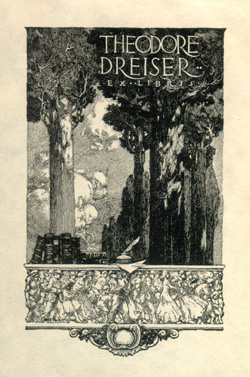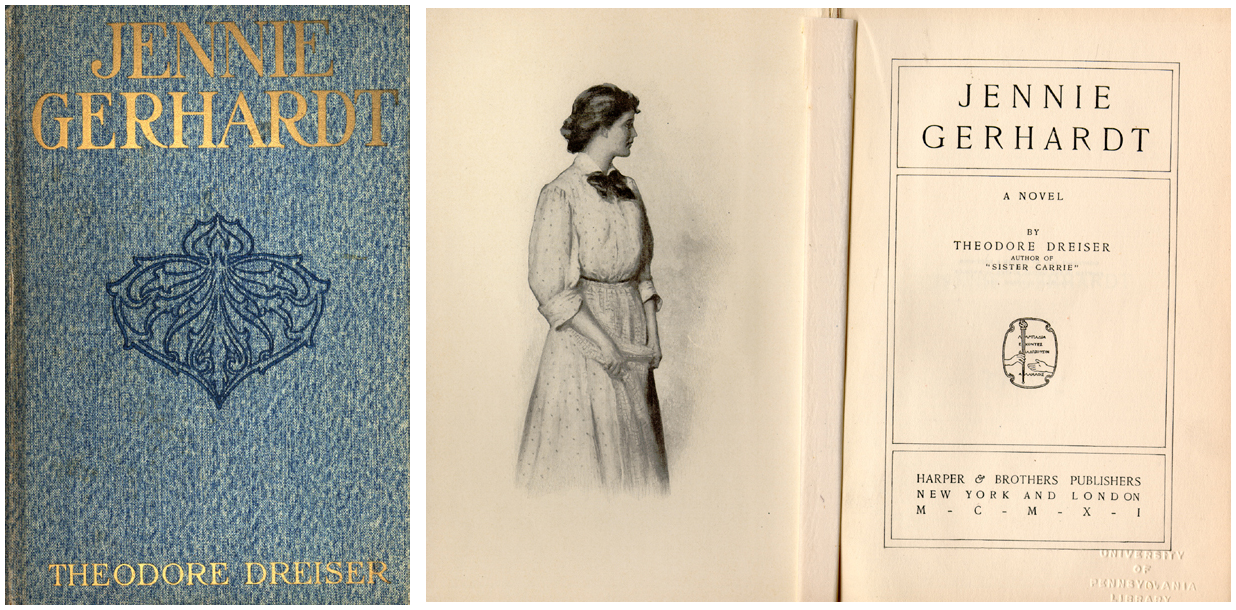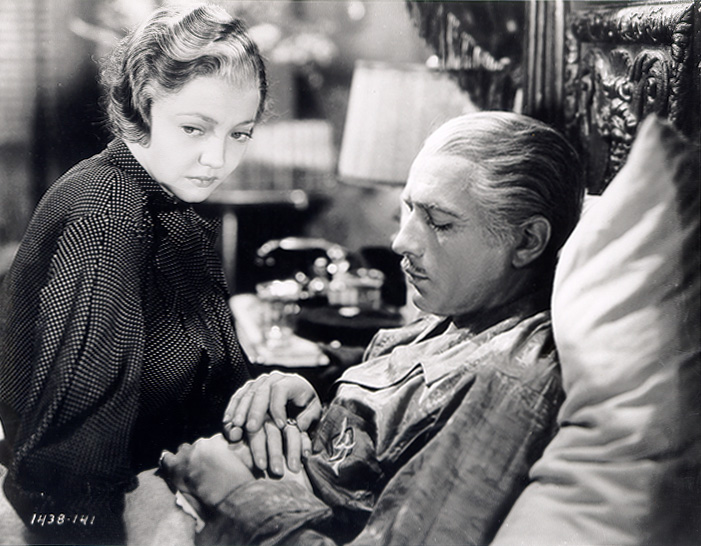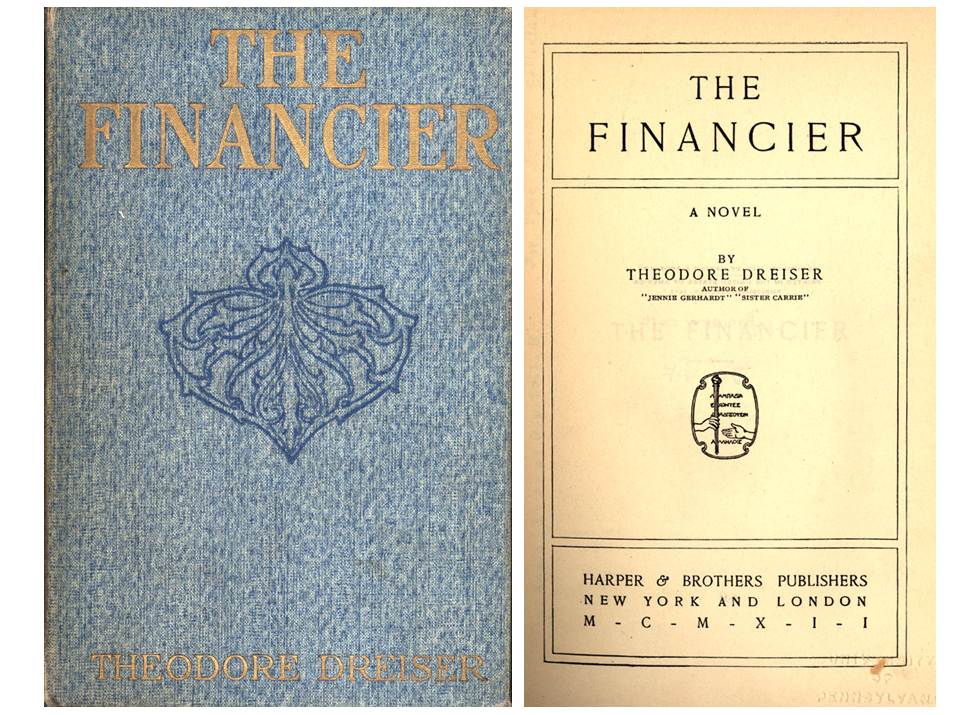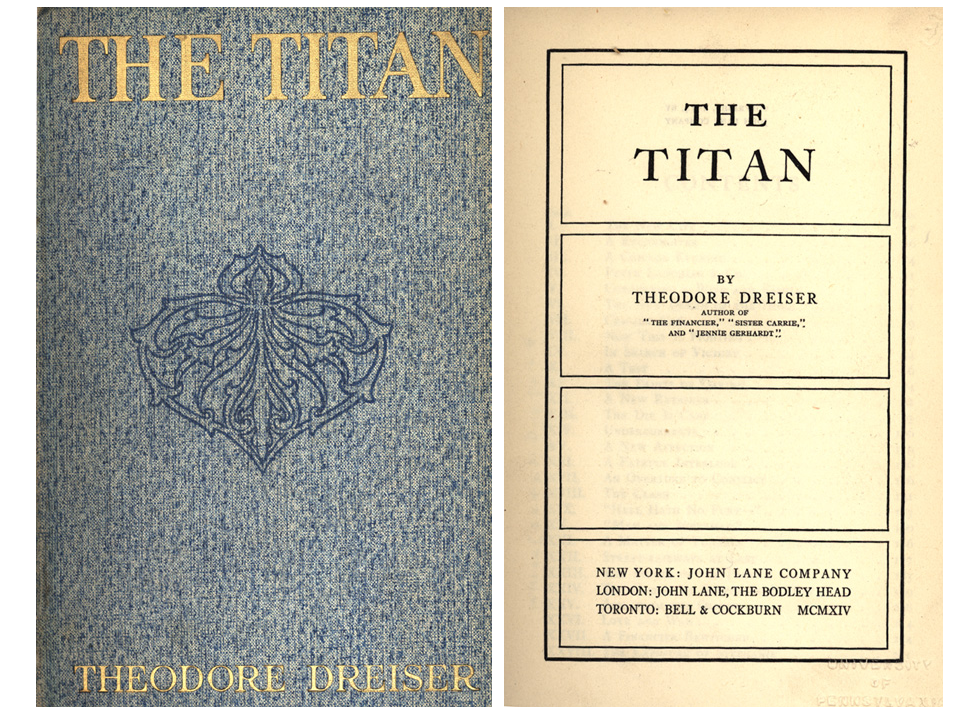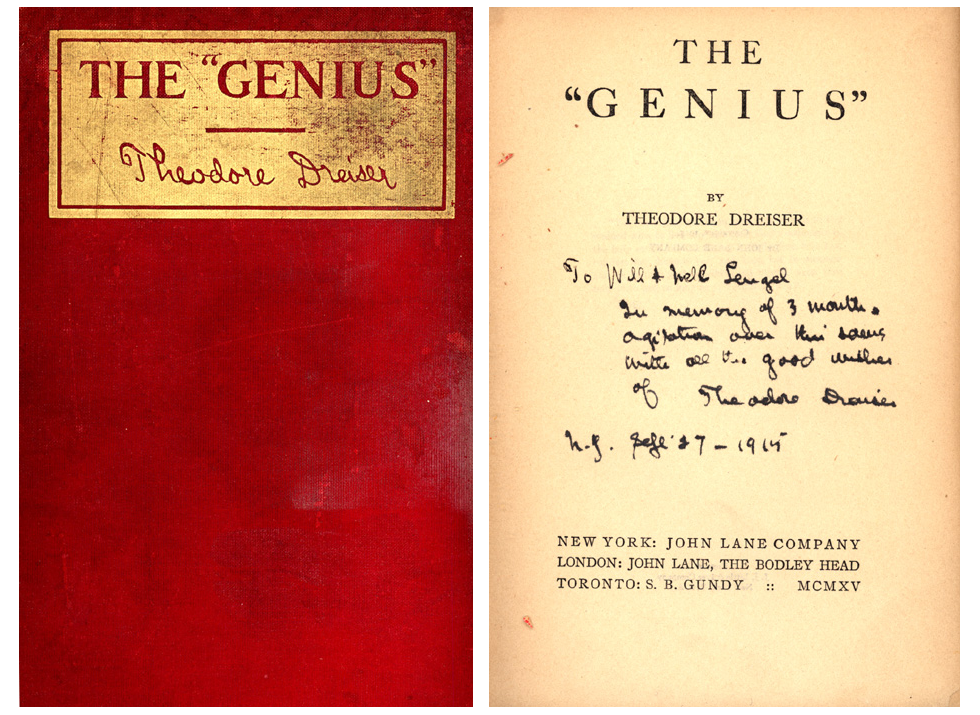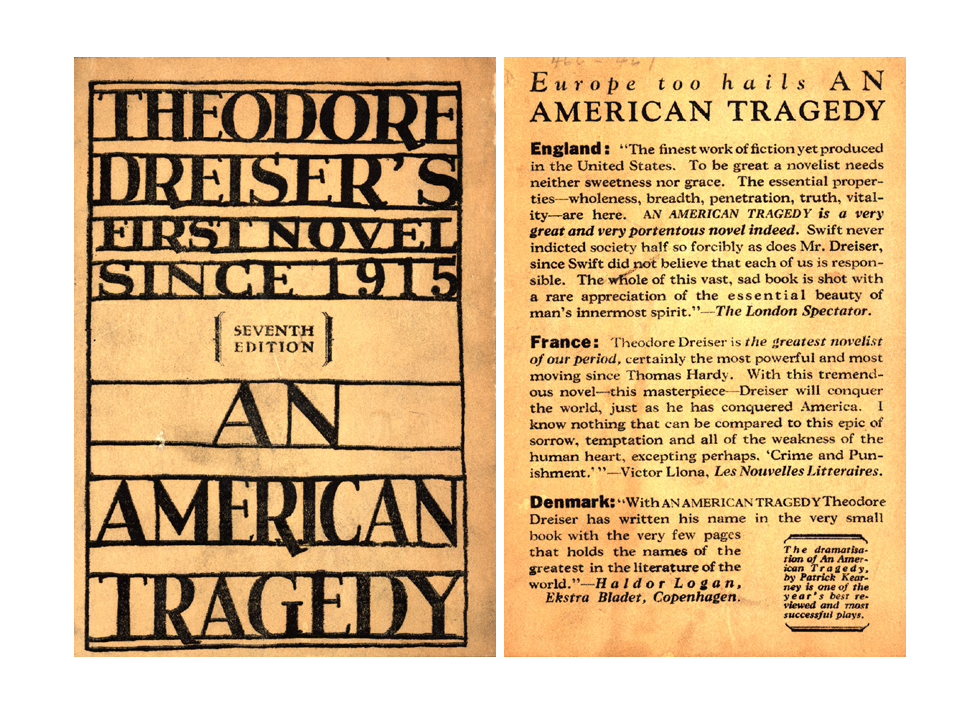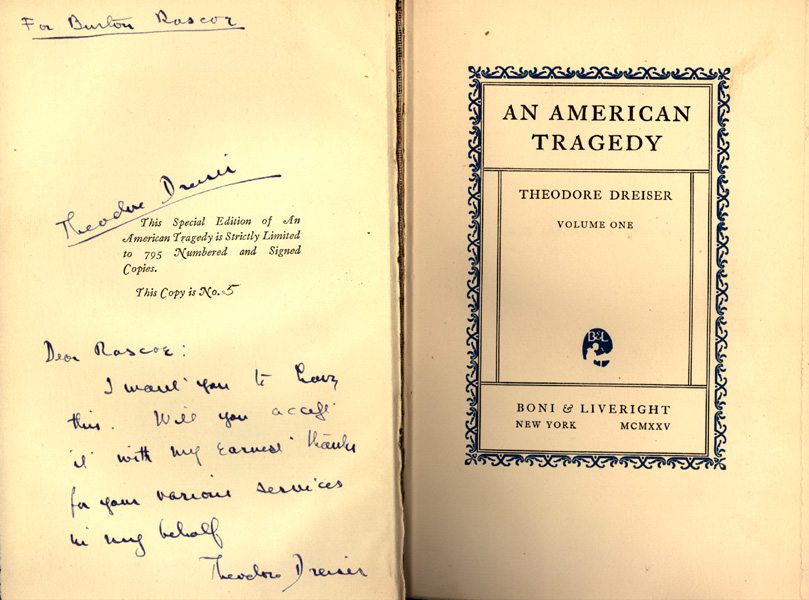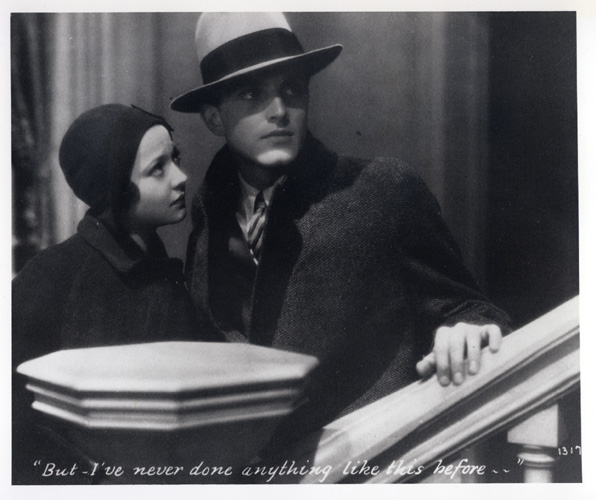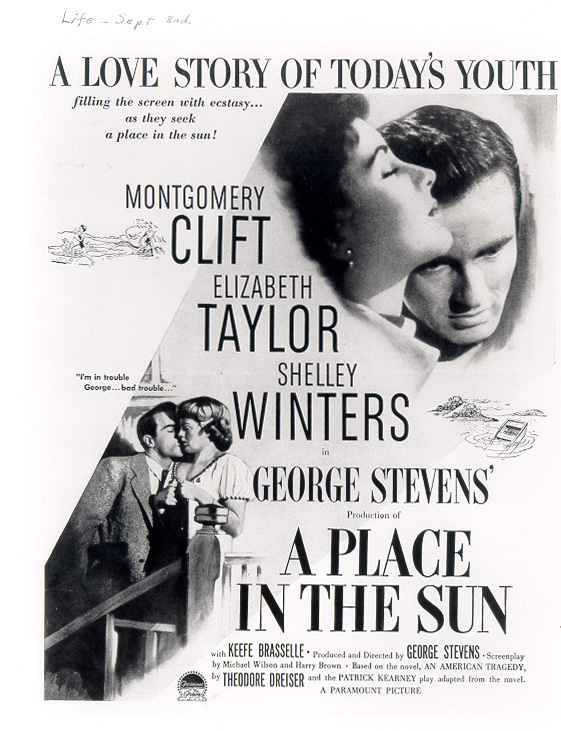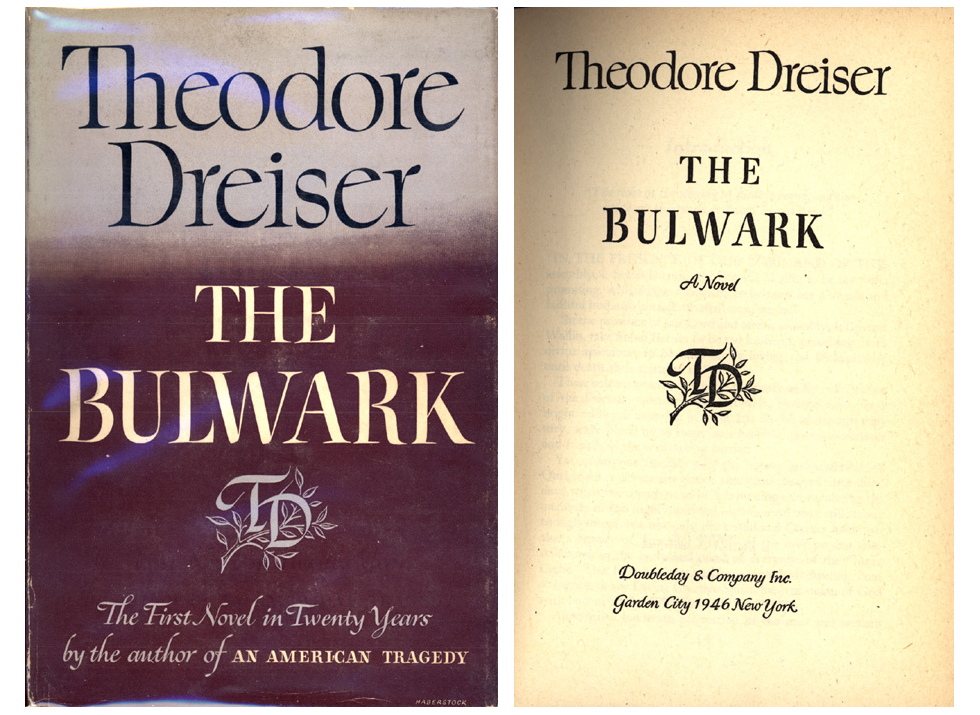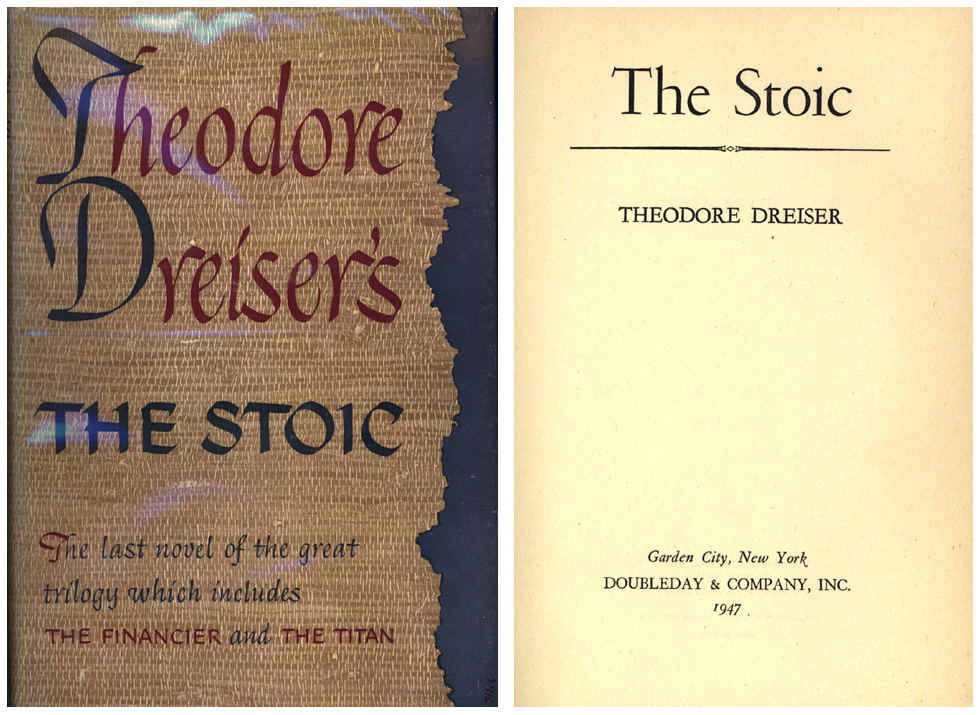Theodore Dreiser was a prolific writer and published extensively. Beyond his years of newspaper and magazine articles and in addition to his novels, he published books of autobiography, poetry, plays, and essays. In his lifetime he saw through to publication six novels, including Sister Carrie; two novels, The Bulwark and The Stoic, were published posthumously, within two years of his death.
In his critical study, The Novels of Theodore Dreiser, Donald Pizer writes:
"Throughout his career as a novelist Dreiser was to rely on . . . formulas [derived from sentimental or hackneyed narrative patterns], particularly those of the seduced country girl in Sister Carrie and Jennie Gerhardt and the Horatio Alger myth of success in the Cowperwood trilogy, The "Genius," and An American Tragedy. In most instances, he both used the myth and reversed some of its traditional assumptions. Carrie "rises" not only despite her seduction but also because of it, and Clyde finds neither luck not pluck in his attempt to succeed. Like many major American novelists, Dreiser used the mythic center of American life as a base from which to remold myth into patterns more closely resembling experience as he knew it."
Fig. 1: Booth and Dreiser first met when the former had done illustrations for theDaily News Sunday supplement on which the latter worked. It was Booth who suggested to Dreiser in 1915 that Dreiser accompany him on an automobile trip to Indiana, where Booth maintained a studio (in addition to his atelier in New York) in his hometown of Carmel. Dreiser agreed and proposed that the two collaborate on a book. In 1916 it was published as A Hoosier Holiday with text by Dreiser and illustrations by Booth.
Fig. 2: Although Dreiser began Jennie Gerhardt in January of 1901, it took the remainder of the decade for him to complete it: difficulties over the publication of Sister Carrie had brought on a nervous breakdown. The novel concerns the aftermath of a woman who has transgressed sexually and attempts to convey the notion that such a "sin" need not engender moral condemnation. Because the novel ends tragically, moral critics were not as quick to condemn the plot as was the case with Sister Carrie.
Fig. 3: Dreiser was pleased with Paramount's 1933 screen adaptation of his 1911 work Jennie Gerhardt, which starred Sylvia Sidney as Jennie and Donald Cook as her lover, Lester Kane. After viewing the film, Dreiser wired Paramount executive B. P. Schulberg: "Jennie moving improvisation upon my theme excellently cast beautifully interpreted."
Fig. 4: In Dreiser's desire to write a novel about an American financier, the real-life career and personality of Charles T. Yerkes served as a rich model. A well-known figure in American life from the mid-1880s until his death in 1905, Yerkes rose to fame and fortune in Chicago with gas and traction interests. The details of his life (which received much press attention in the five or six years following his death) were the stuff of melodrama and included a prison term in Philadelphia, divorce, love affairs, immense expenditures on art, and so forth. Frank Algernon Cowperwood is Dreiser's imaginary Yerkes in a saga that Dreiser envisioned as a trilogy.
Fig. 5: Volume 2 of the Cowperwood trilogy offers a more mature and worldly-wise protagonist, one whose business affairs are not simply self-serving but also of benefit to mankind.
Fig. 6: This autobiographical novel reinforces some common romantic notions concerning the artist, such as freedom from social and moral conventionality, as well as the need for the companionship of women without the limitations of monogamy. Although the work sold well when first published, it was suppressed in 1916 by John S. Sumner's Society for the Suppression of Vice. This first edition is inscribed to William Lengel, who was the first to read the work in typescript.
Fig. 7 - Fig. 8: Based on the widely publicized 1906 murder trial of Chester Gillette in upstate New York, An American Tragedy received excellent reviews, one even claiming that it was "the greatest American novel of our generation." In 1926 Boston's District Attorney banned the sale of the work in Boston, and Donald Friede of Boni & Liveright was found guilty of selling literature "manifestly tending to corrupt the morals of youth." The special edition of An American Tragedy was inscribed to Burton Rascoe, an admirer and supporter of Dreiser's work, who published a monograph on him in 1925.
Fig. 9: Dreiser was appalled by Samuel Hoffenstein's proposed screenplay for a film version of An American Tragedy. Despite his characterization of the script as "nothing less than an insult to the book," Dreiser lost his attempt to have the movie suppressed, and it was released in 1931. The film starred Phillips Holmes as Clyde Griffiths, Sylvia Sidney as Roberta Alden [both pictured here], and Frances Dee as Sondra Finchley.
Fig. 10: Dreiser did not live to see the film remake of An American Tragedy. Director George Stevens decided to call his version A Place in the Sun, because the title had "more spiritual uplift" and signified the hero's goal: "the undying love of a beautiful and wealthy girl." Characters were renamed, and the script focused less on the social and familial interests that shaped George Eastman's character (Clyde in the novel) and more on the love story between George and Angela Vickers (Sondra in the novel). Montgomery Clift starred as George, Elizabeth Taylor as Angela, and Shelley Winters played Alice Tripp (Roberta in the novel). The movie had its premiere on 14 August 1951. Reviewers were mostly laudatory, and the film received six Academy Awards.
Fig. 11: Begun in the fall of 1914, The Bulwark was not completed until May 1945. It concerns the financial and moral difficulties faced by a Quaker in light of changing times. The central character is a conservative Philadelphia Quaker who fails to hold back change. The novel speaks to the ever-widening gap created by modern man's abandonment of religion and his increasing dependence on technological and materialistic standards.
Fig. 12: The Stoic is the story of Frank Cowperwood's boldest venture, the building of the London subway system. Together with The Financier and The Titan, it forms parts of Dreiser's trilogy of the nineteenth-century American dream of material power. Dreiser died before he could revise the conclusion, about which he had deep reservations; it was left to his widow Helen, among others, to re-draft and edit the final published version.
